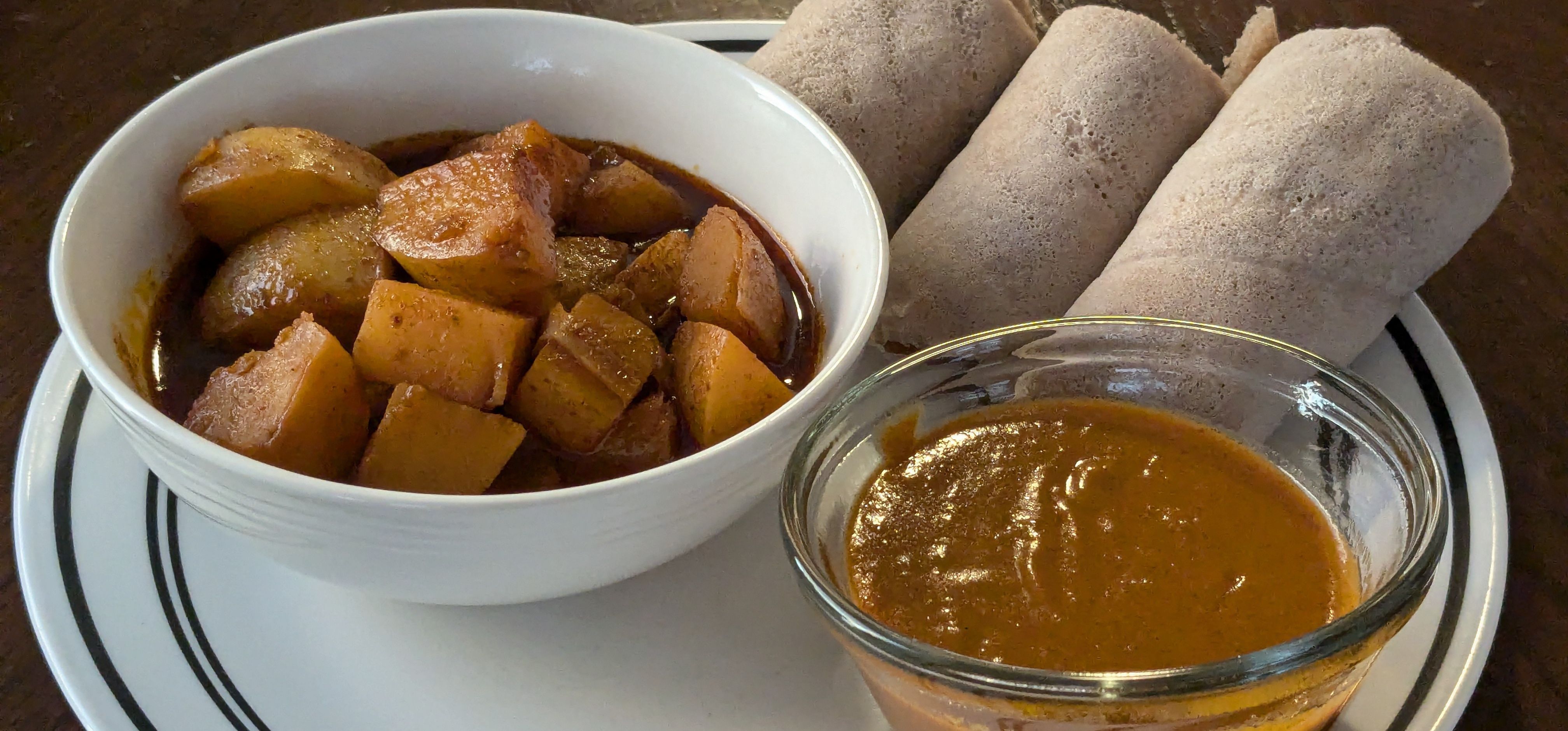
We conclude our exploration of Ethiopian cuisine this week with a double-header: shiro, a thick sauce made from powdered chickpeas, and dinnich wat, a spicy wat made with potatoes.
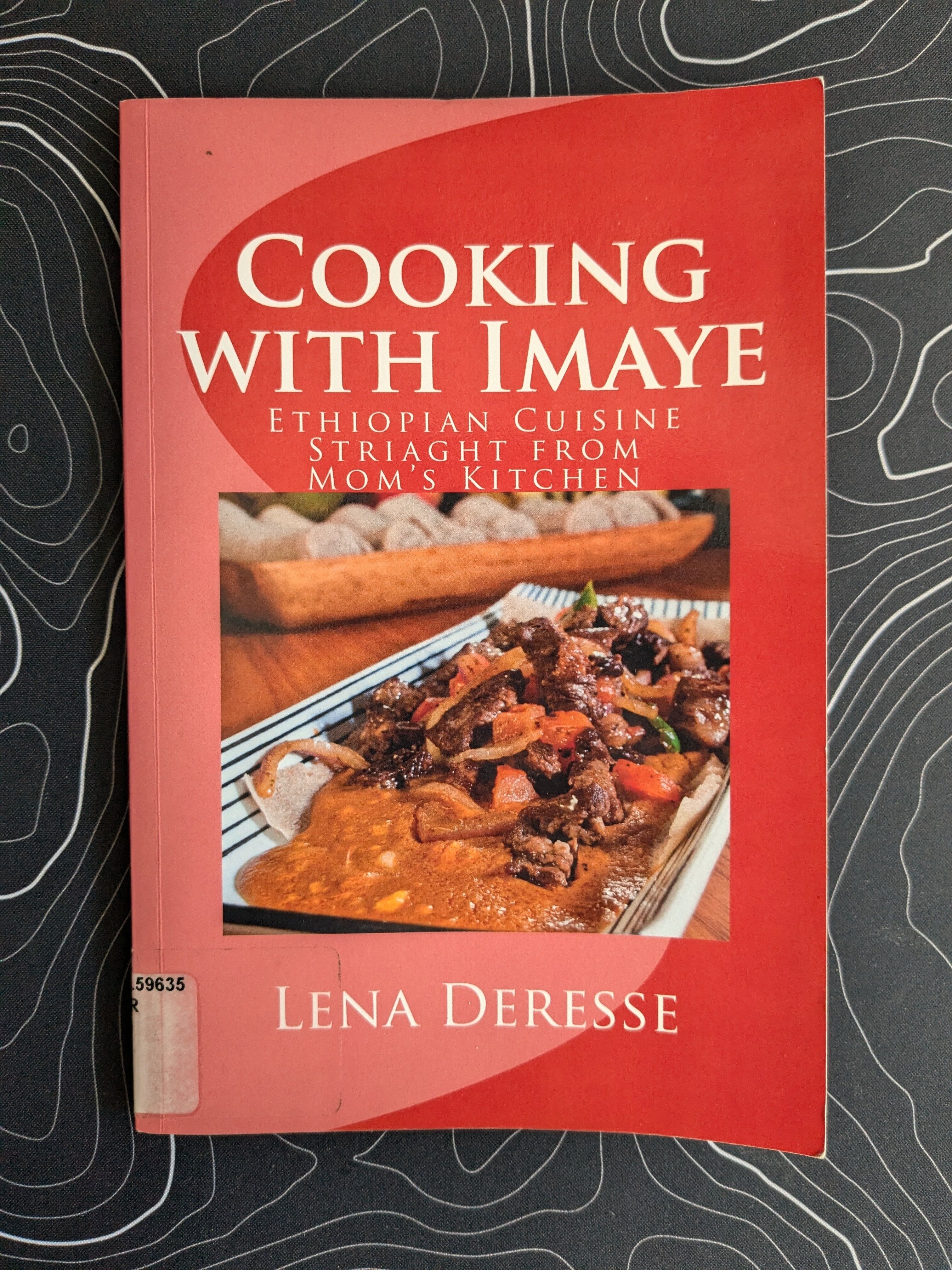
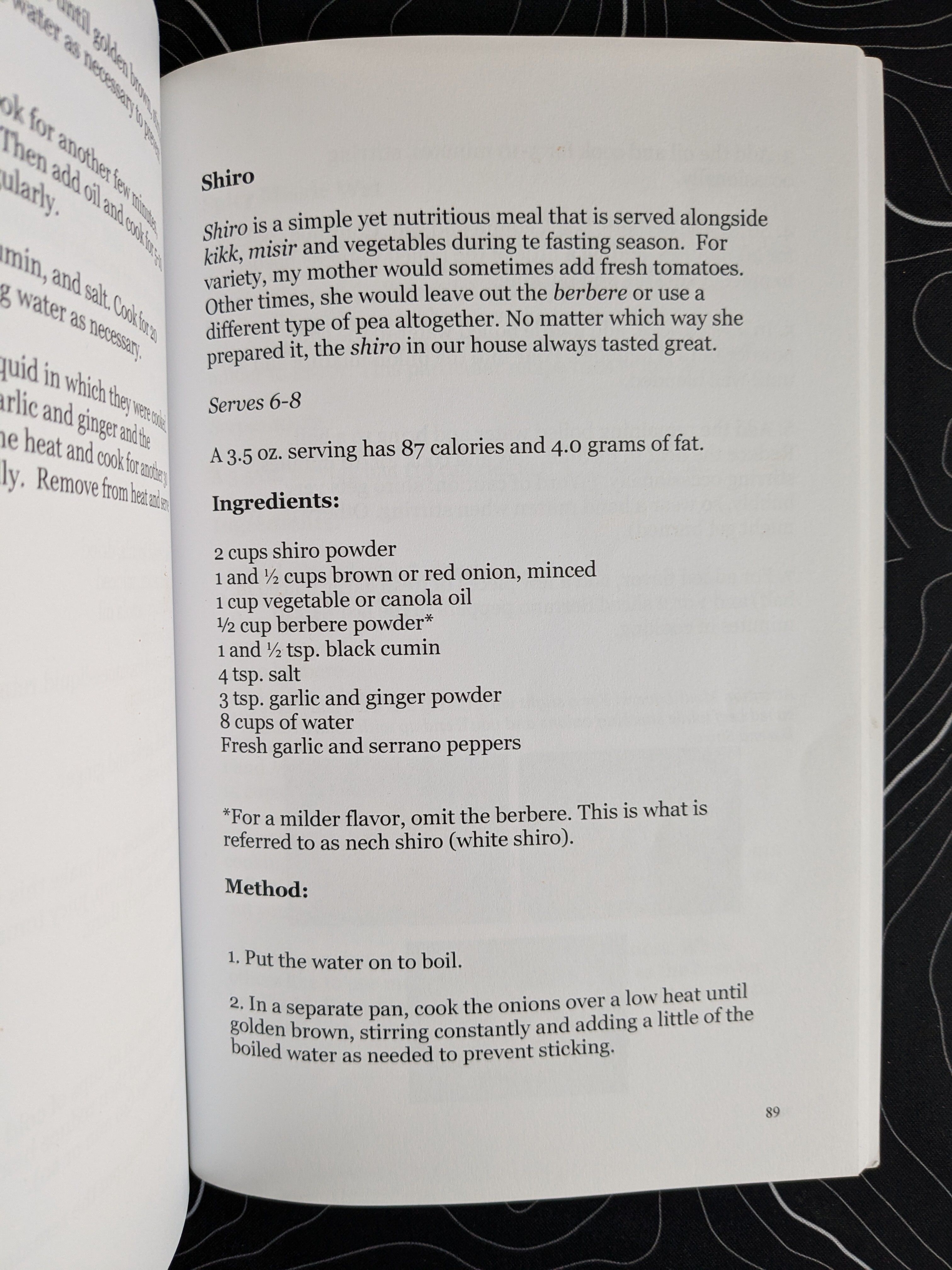
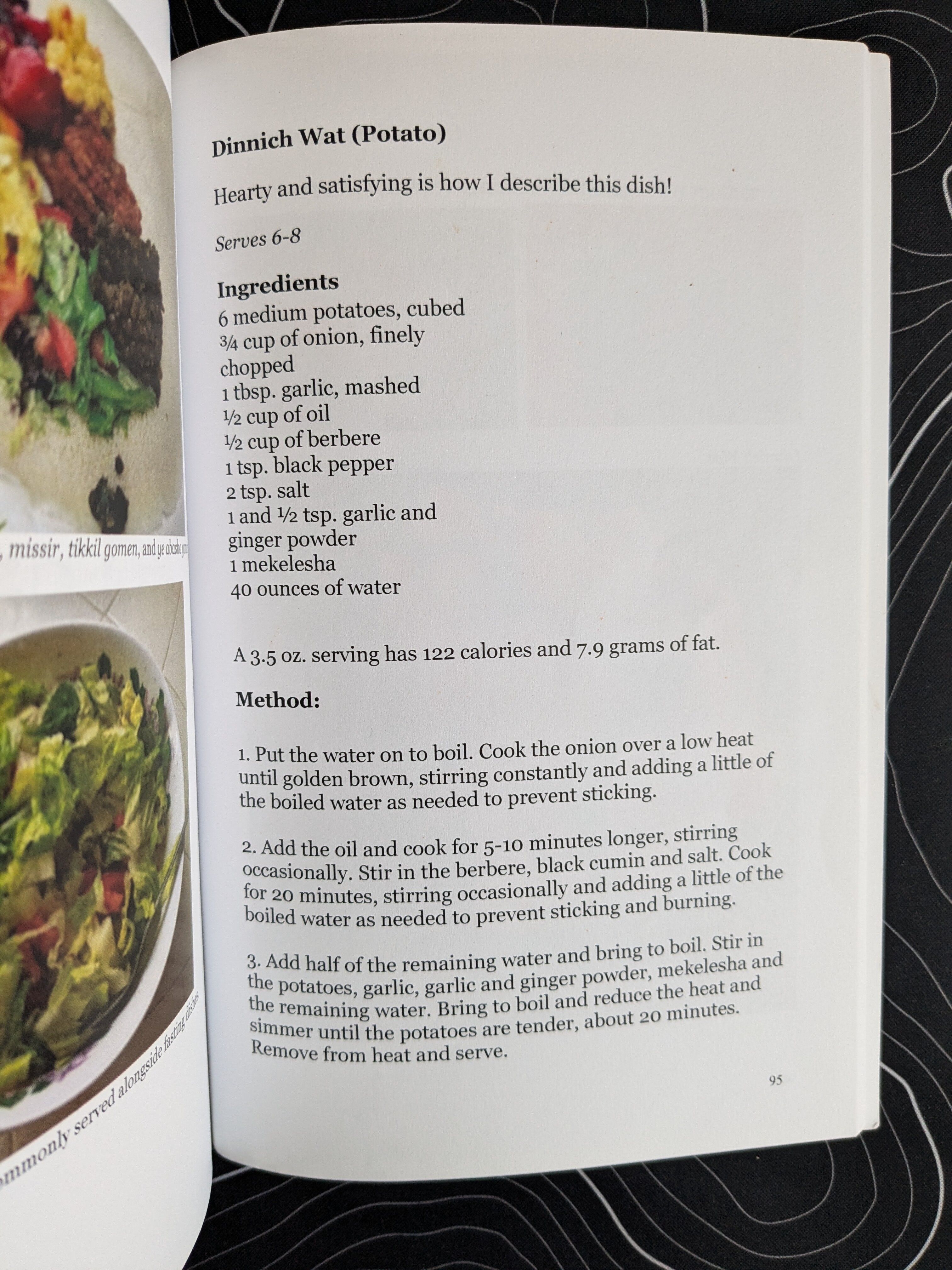
Our recipes this week come from "Cooking With Imaye" by Lena Deresse, a delightful little book of recipes that memorialize her cooking journey with her mother. The dinnich is similar to the doro wat we tried previously, however the shiro was an interesting departure.
Unfortunately, I forgot to take a picture of the ingredients before we started. I was joined by my sister when we cooked this, so the chaos levels were high.
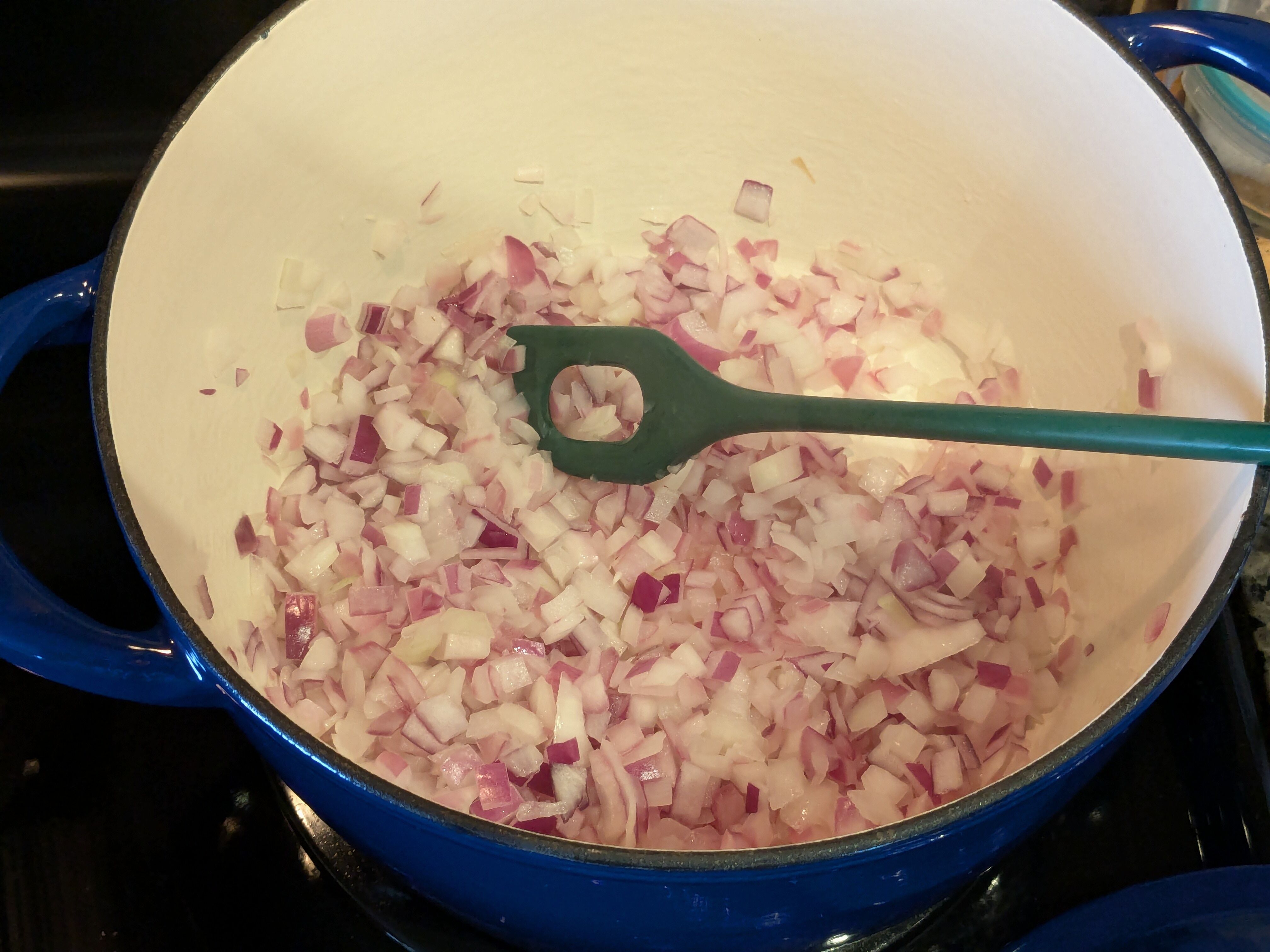
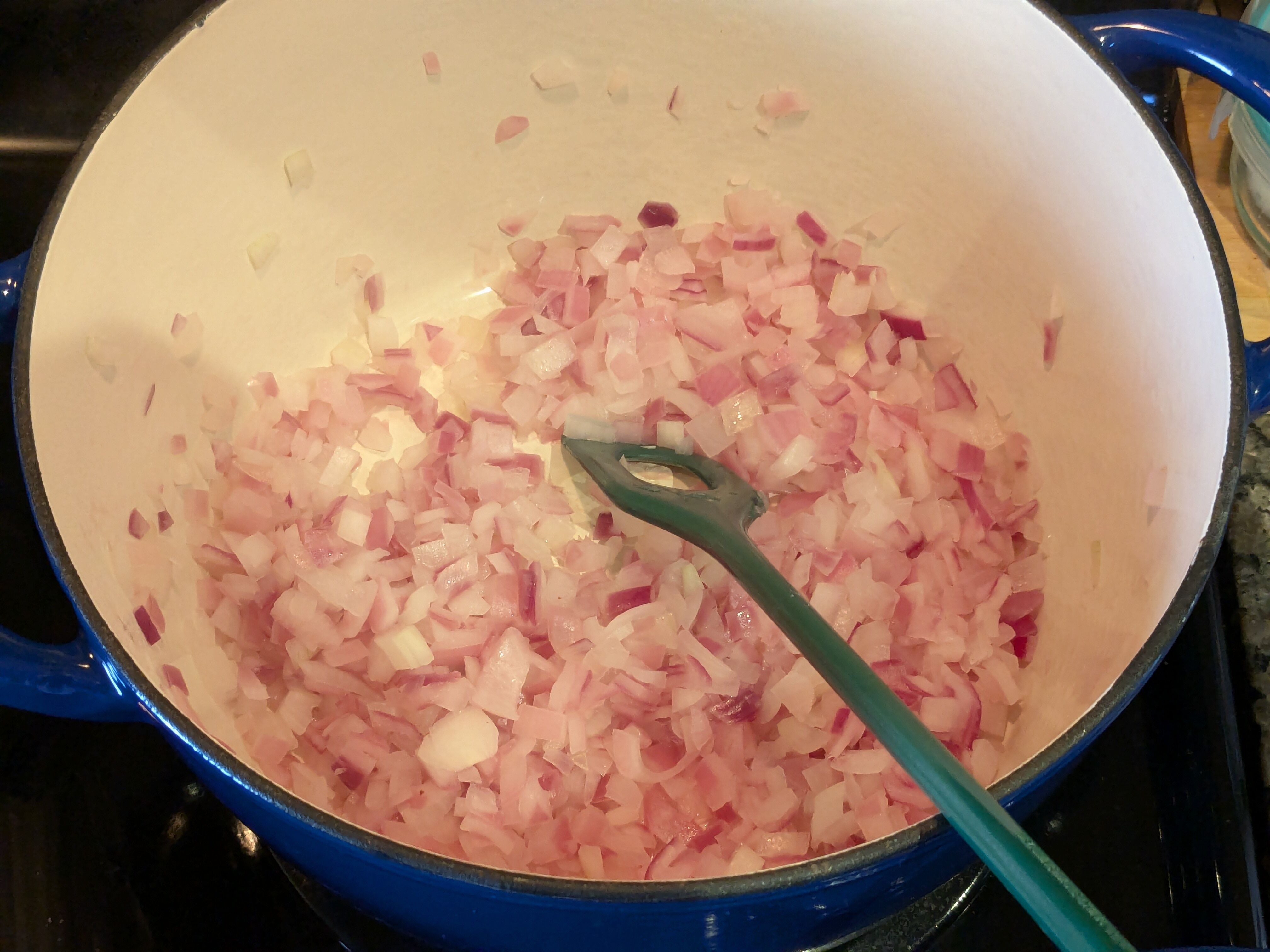
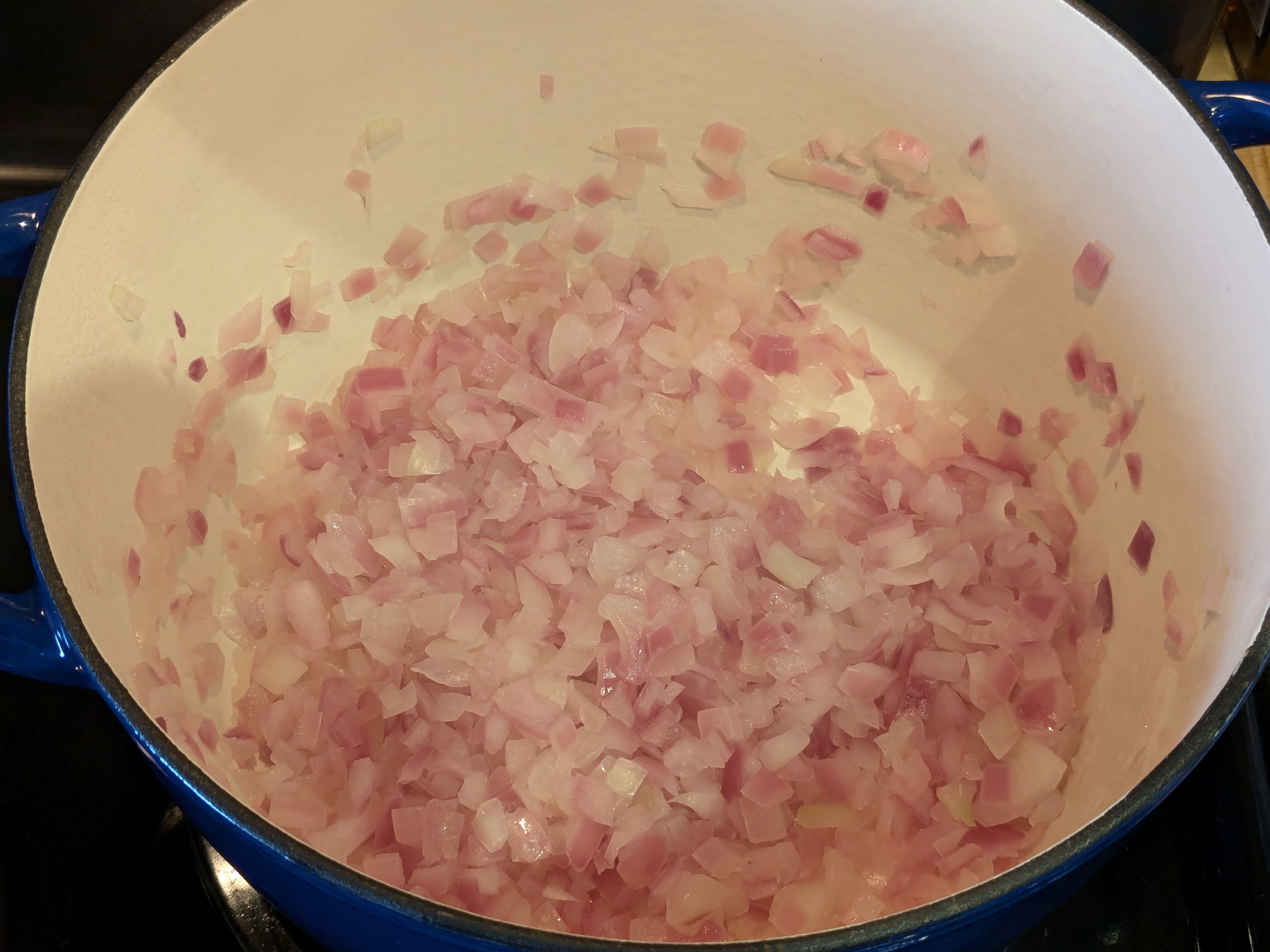
Both recipes start with the same onion base, so we did a large batch. As is customary, this begins by dry-cooking the onions over a low heat until they begin to soften. Here, we used a mixture of red and yellow onion.
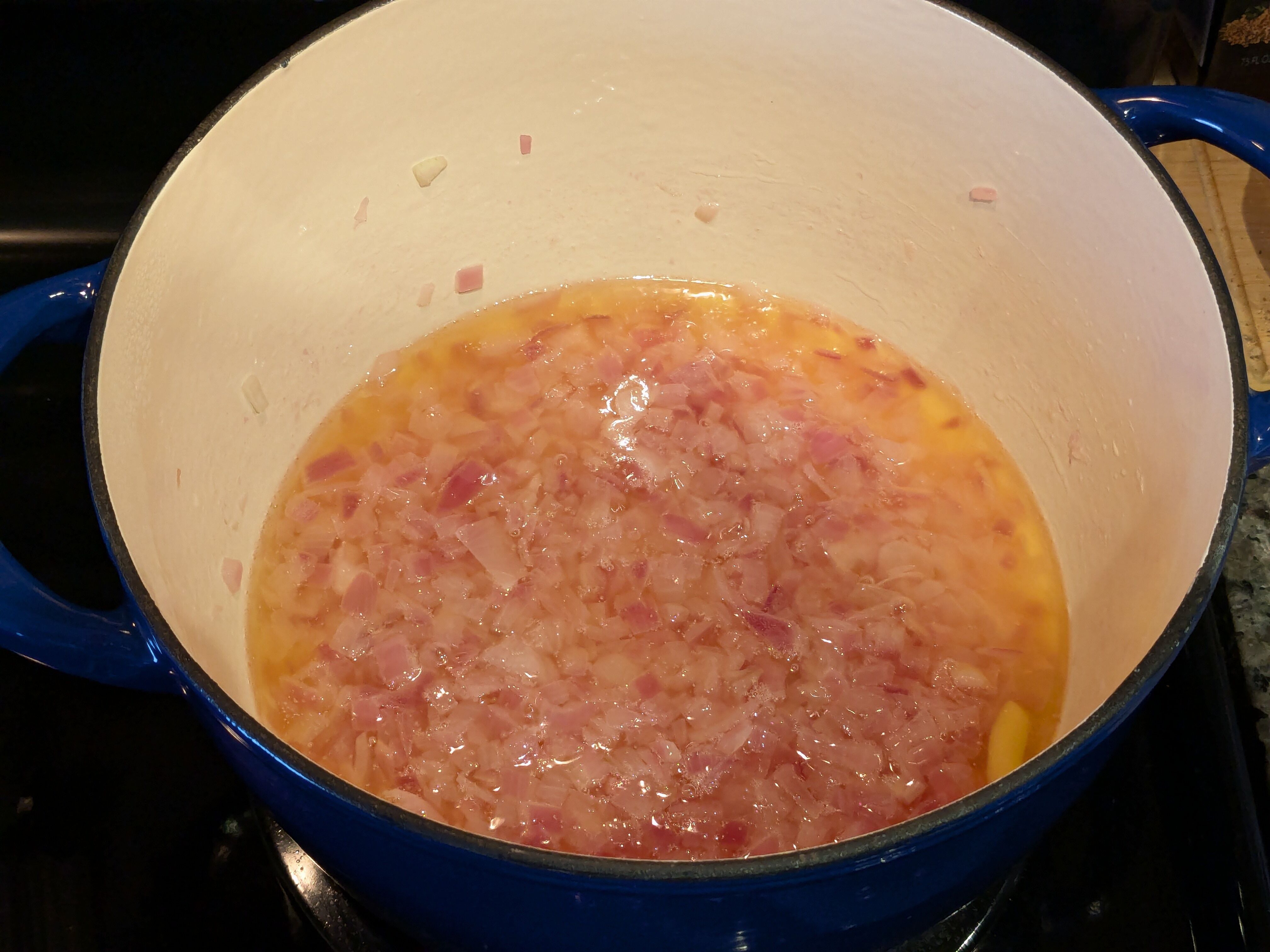
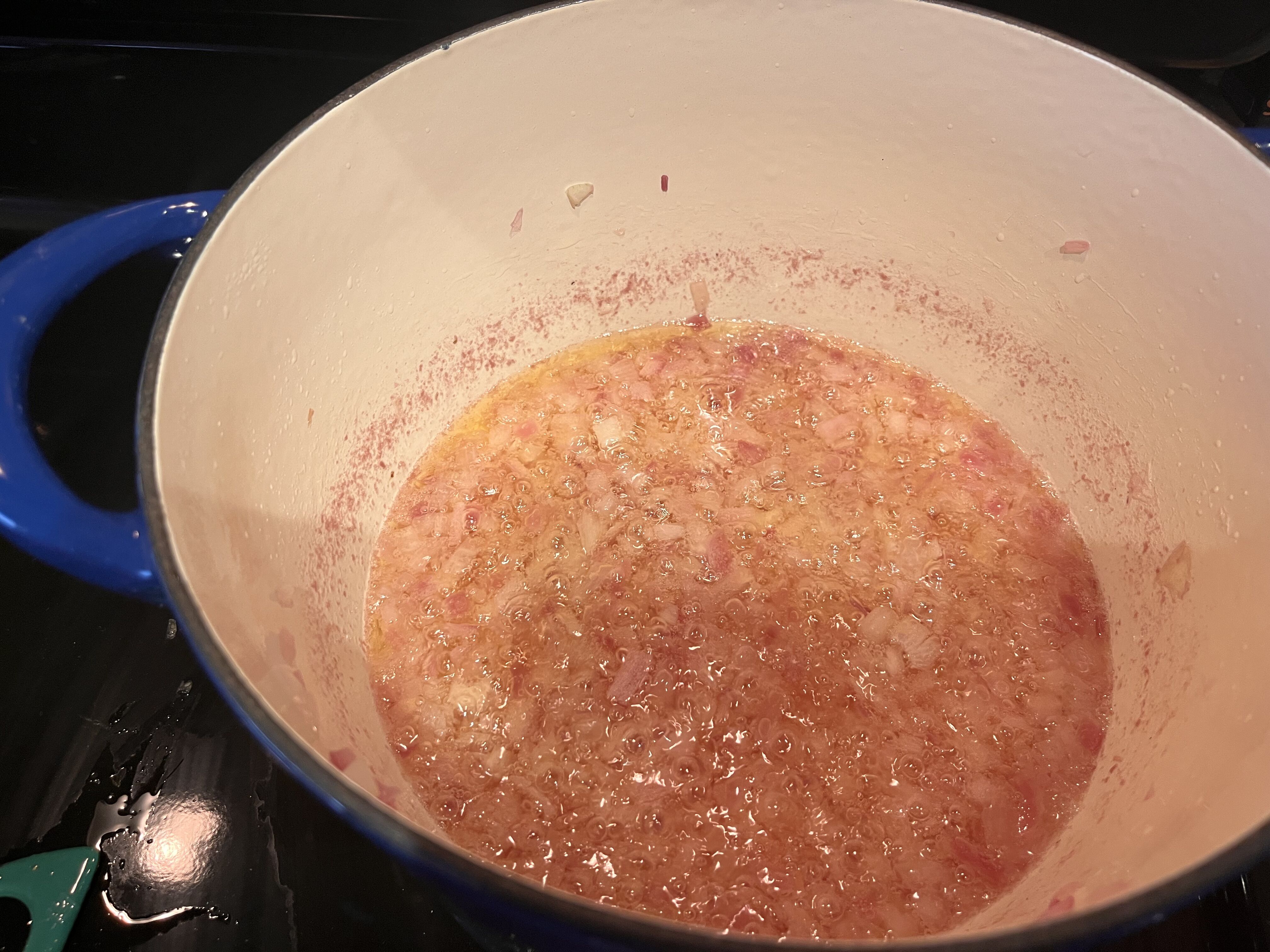
Once the onions soften, Lena calls for what I can only describe as a cholesterol-wrenching amount of fat. The onions slowly cook down in the fat for a bit longer. Then, we split the onions into two pots for the two recipes.
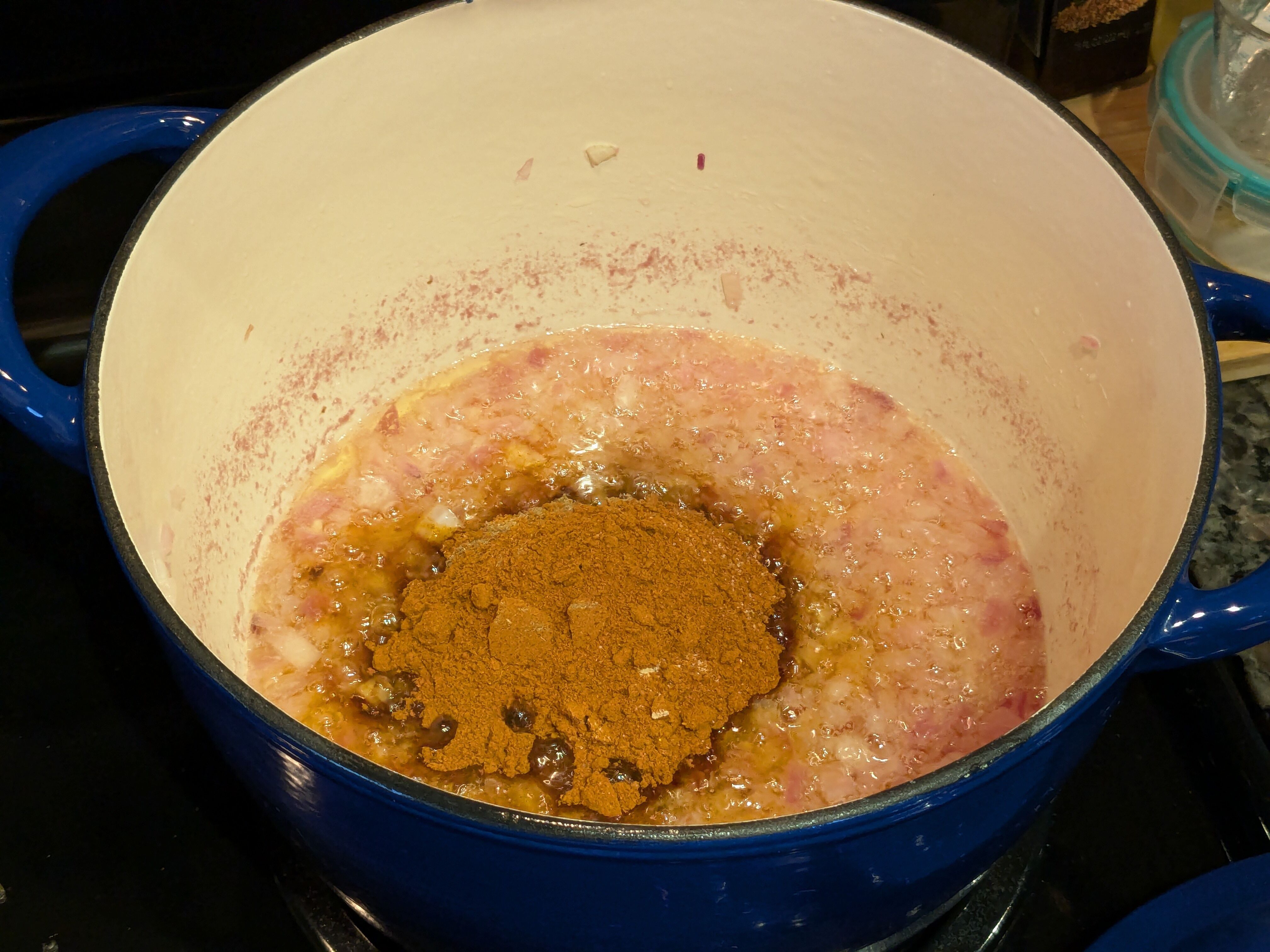
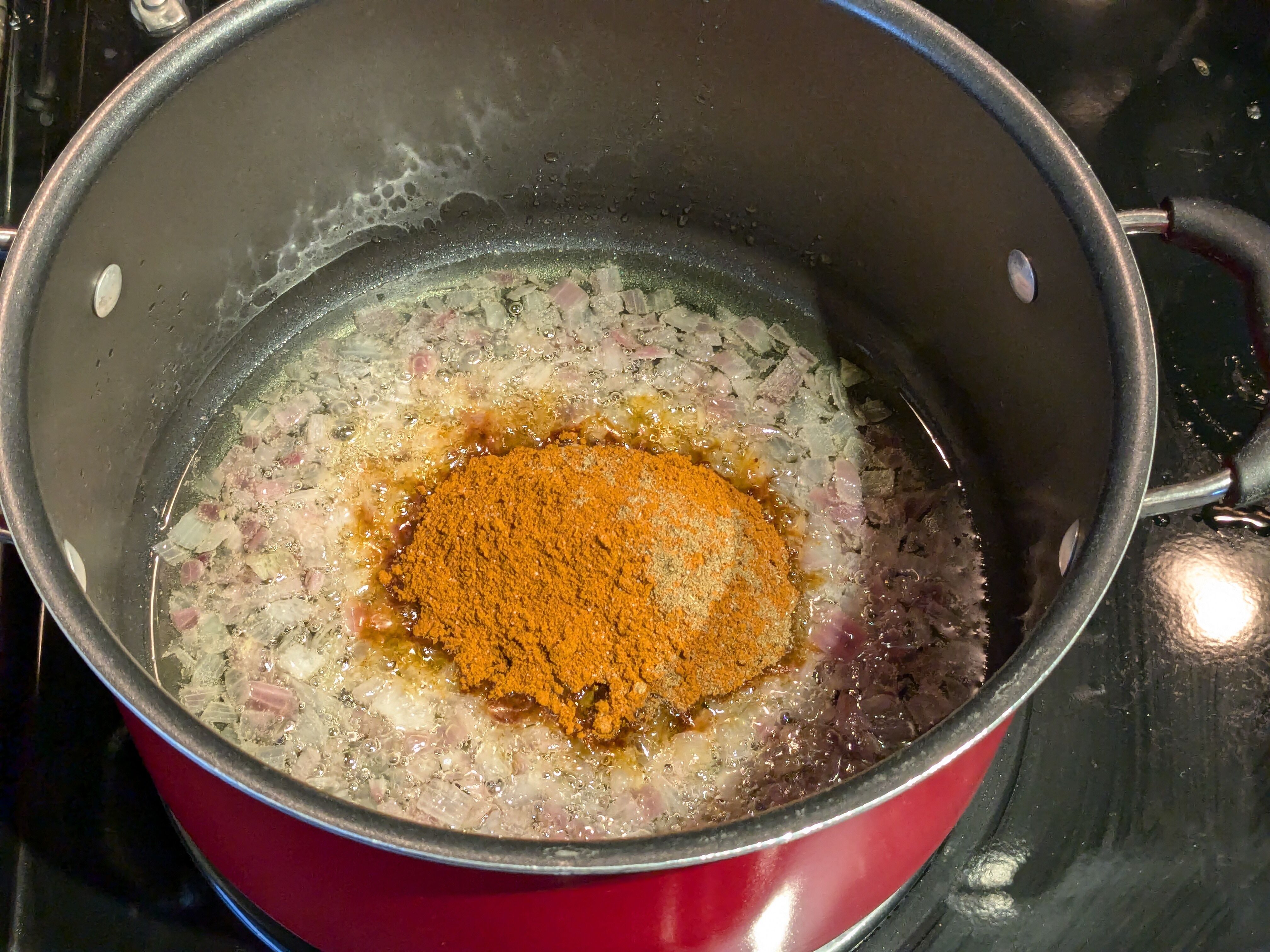
Both recipes then call for a blend of spices, which are then cooked down in the fat for about 15 minutes. The shiro has a healthy amount of spicy berbere, though this can be omitted to make something known as "white shiro," a more mild dish.
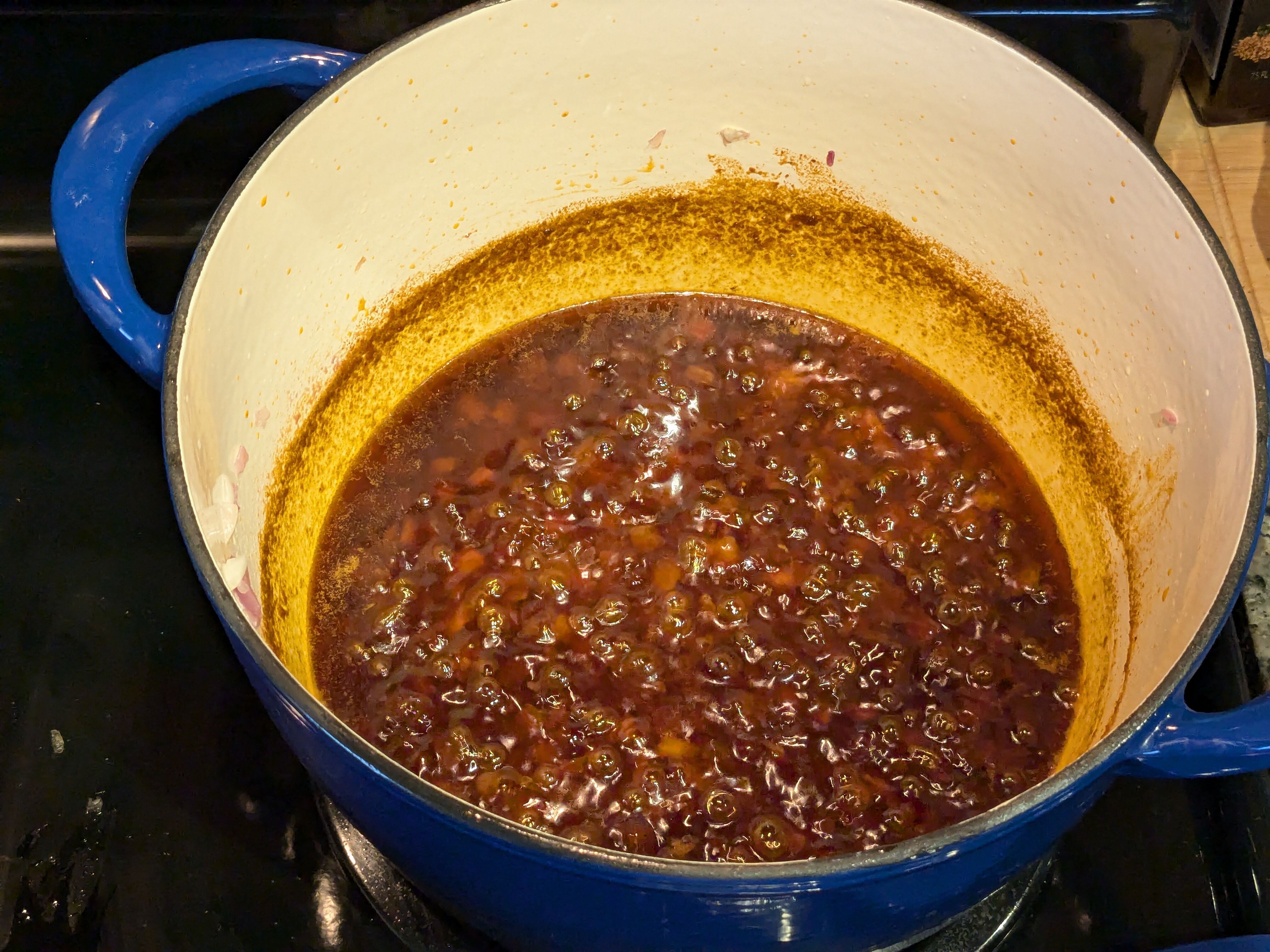
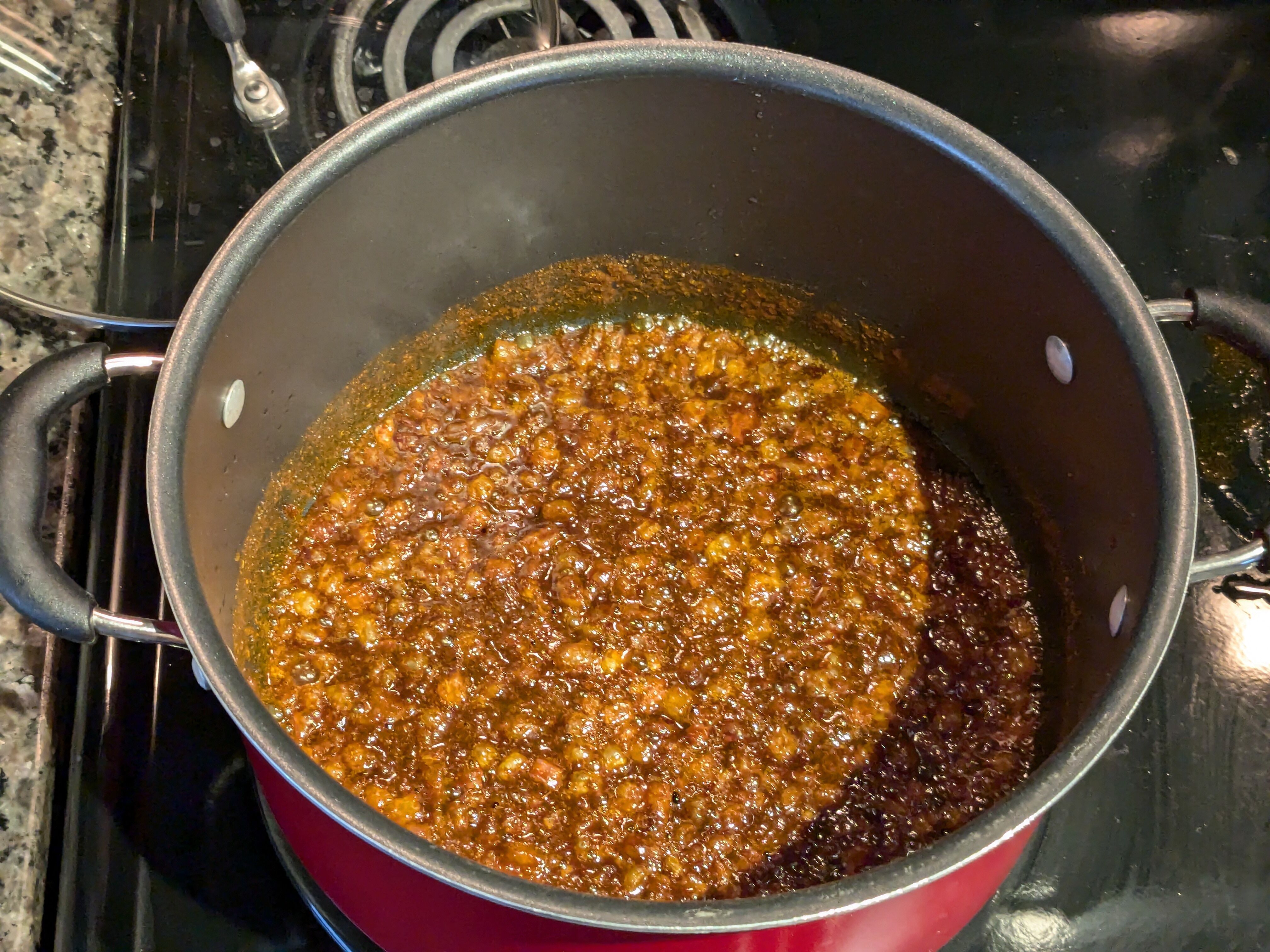
During this time, we added a few splashes of water to each to keep them from catching and burning. While these were cooking, we prepared the shiro by mixing it with water to form a thick paste.
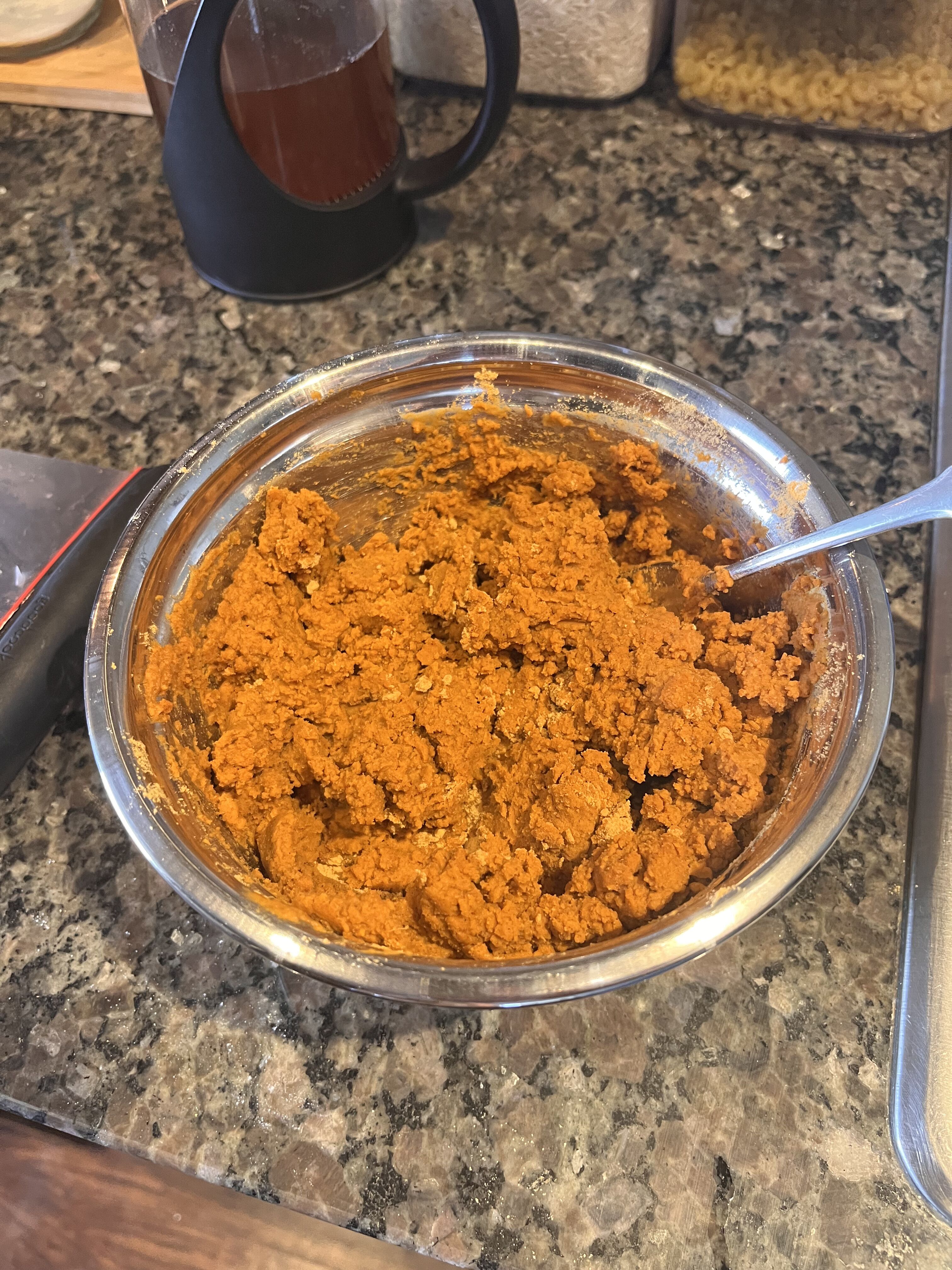
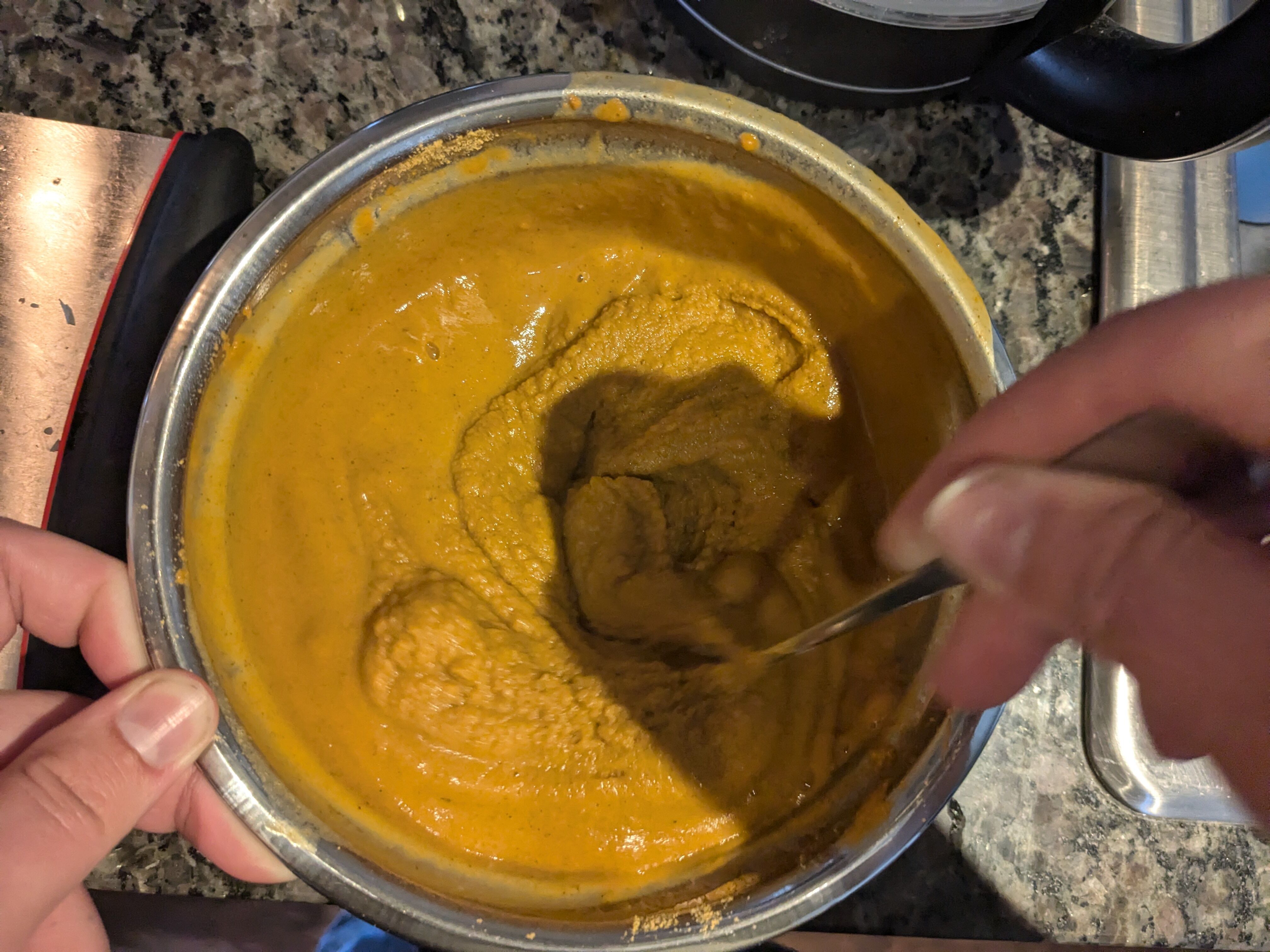
For the shiro, we then whisked the prepared paste into the onion-mixture until it was well incorporated, then added boiling water until it was in a thick-soup consistency.
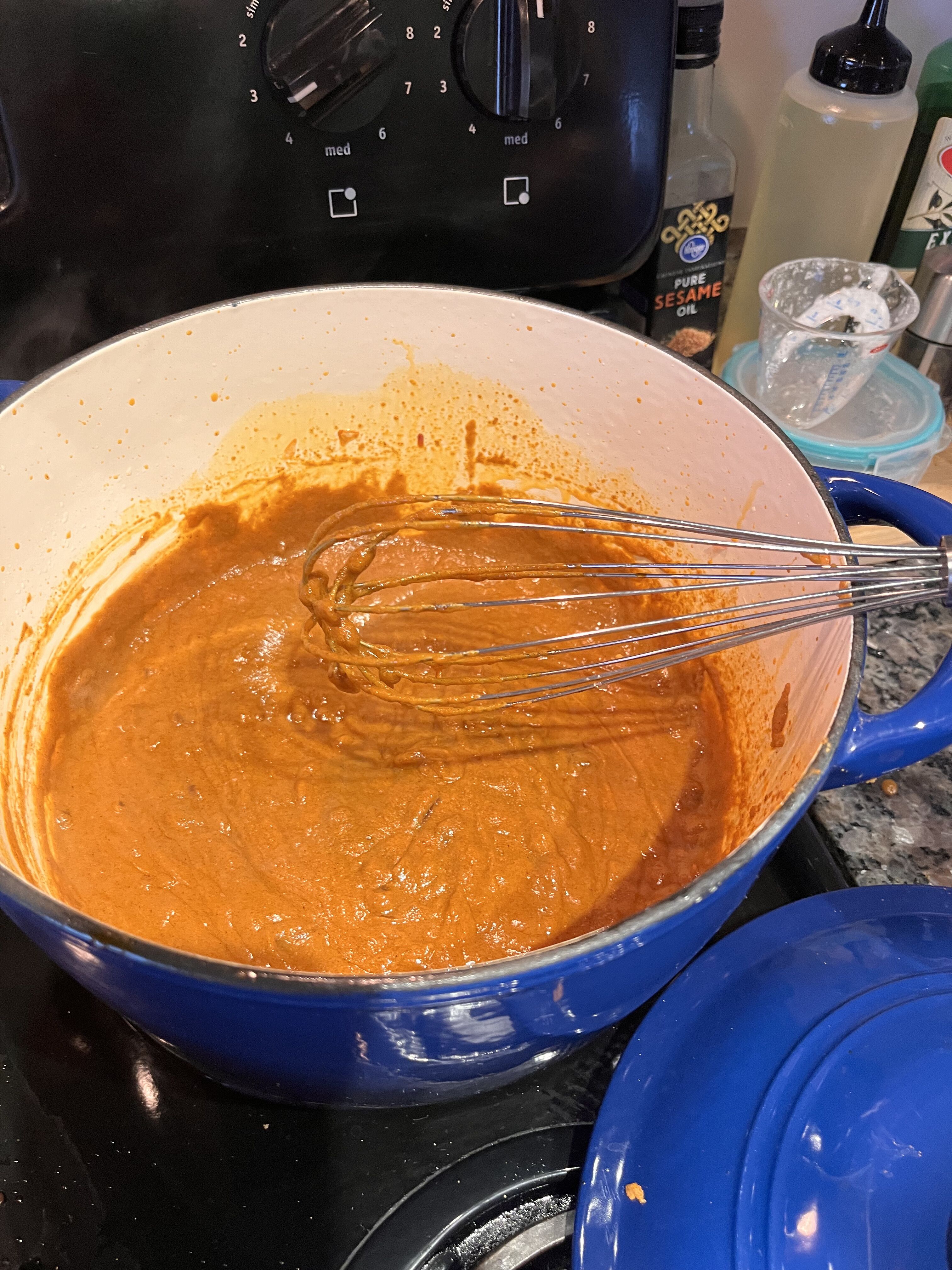
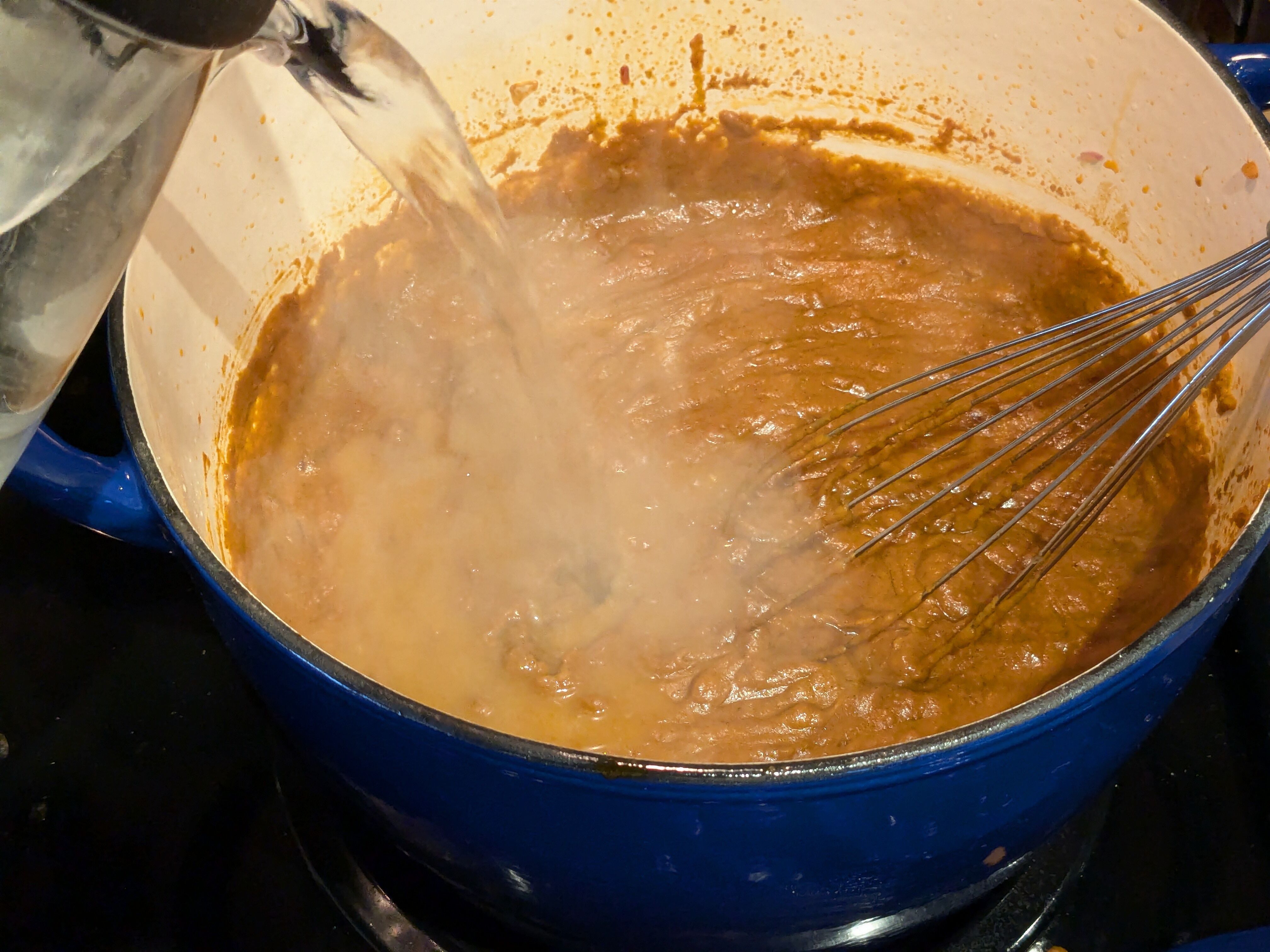
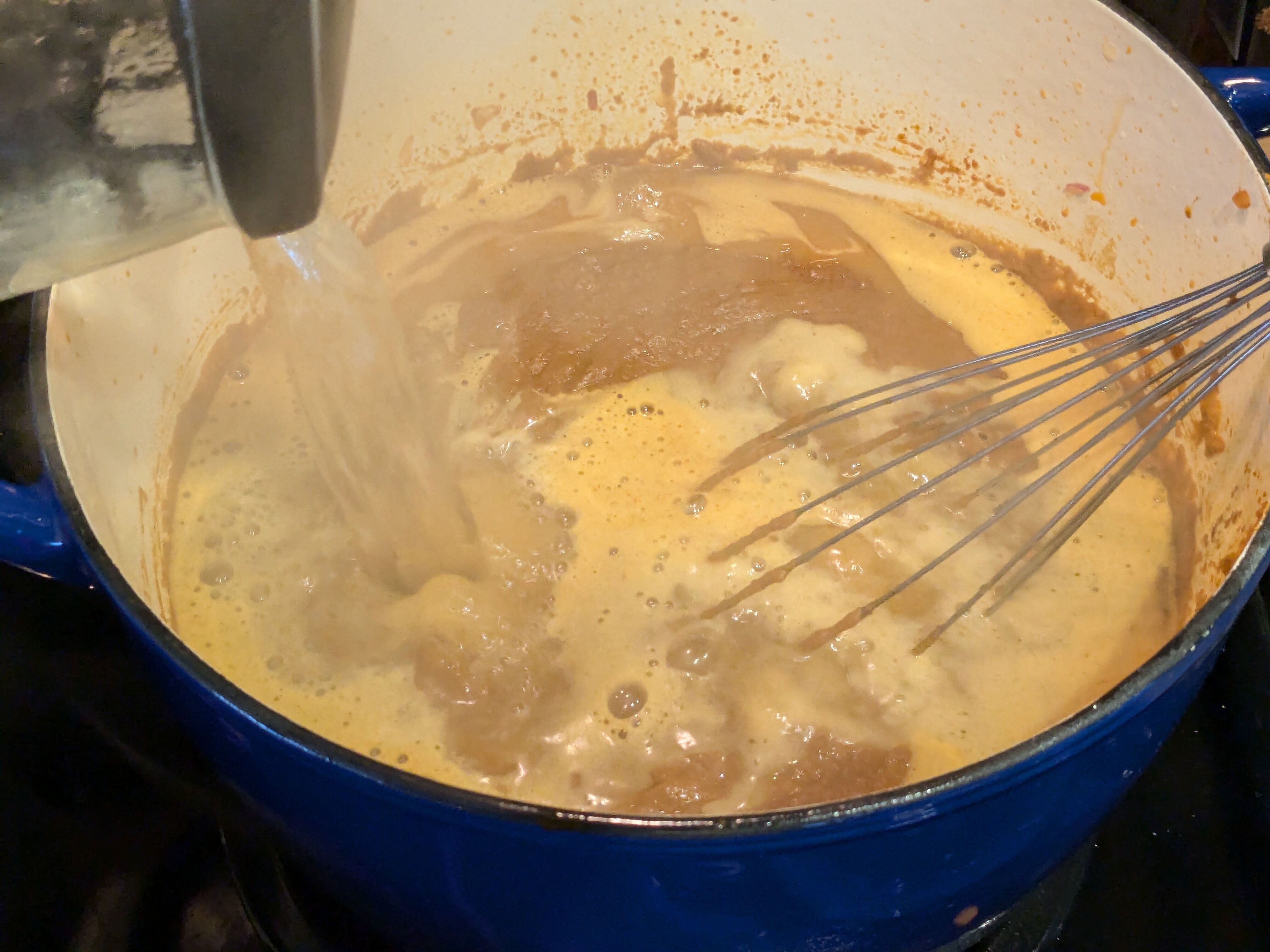
The shiro starts off watery, then reduces for the better part of an hour until it returns to a thick-sauce consistency. In that time, it picks up the flavor of the onions and spices and cooks out the raw chickpea flour.
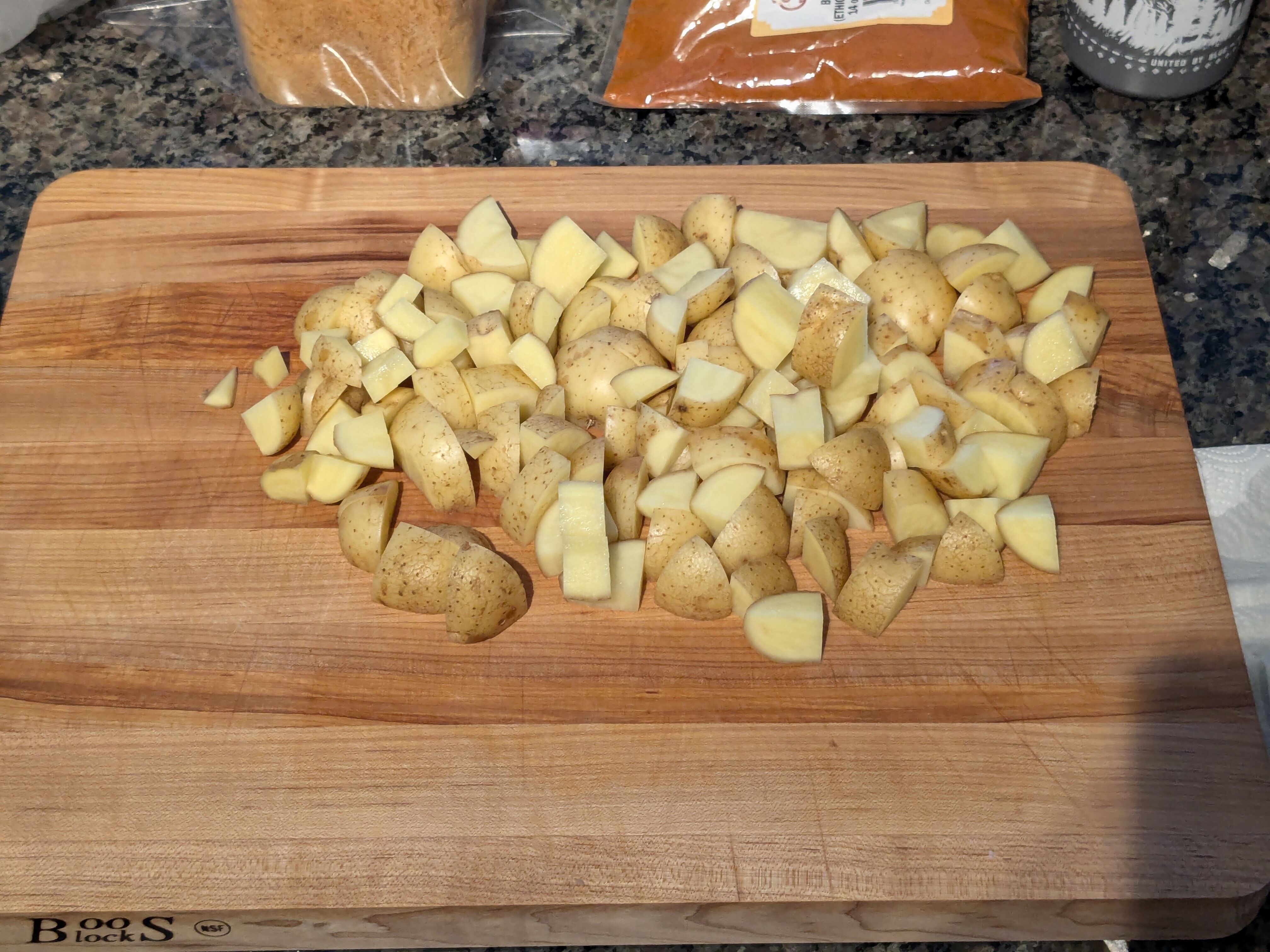
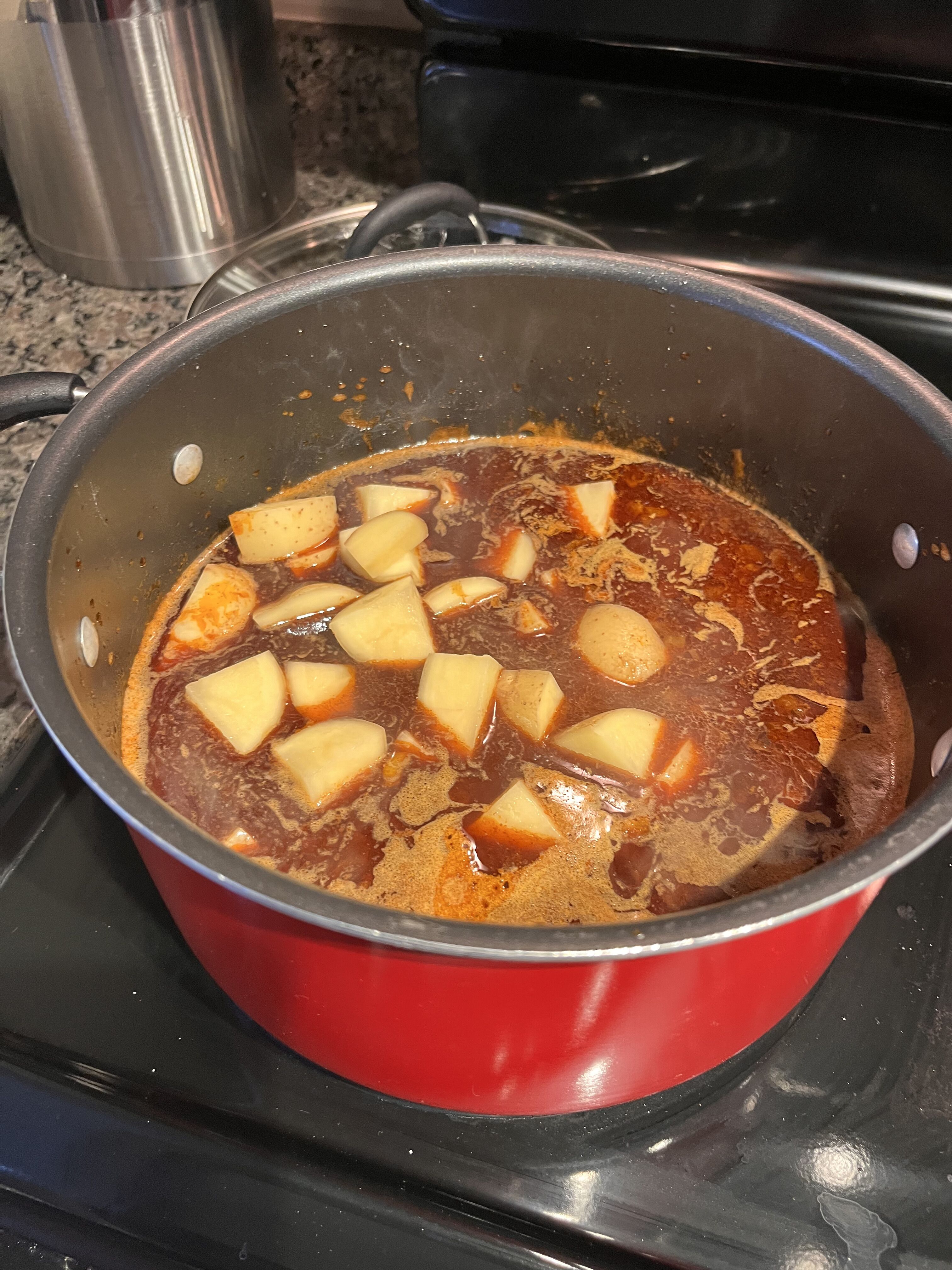
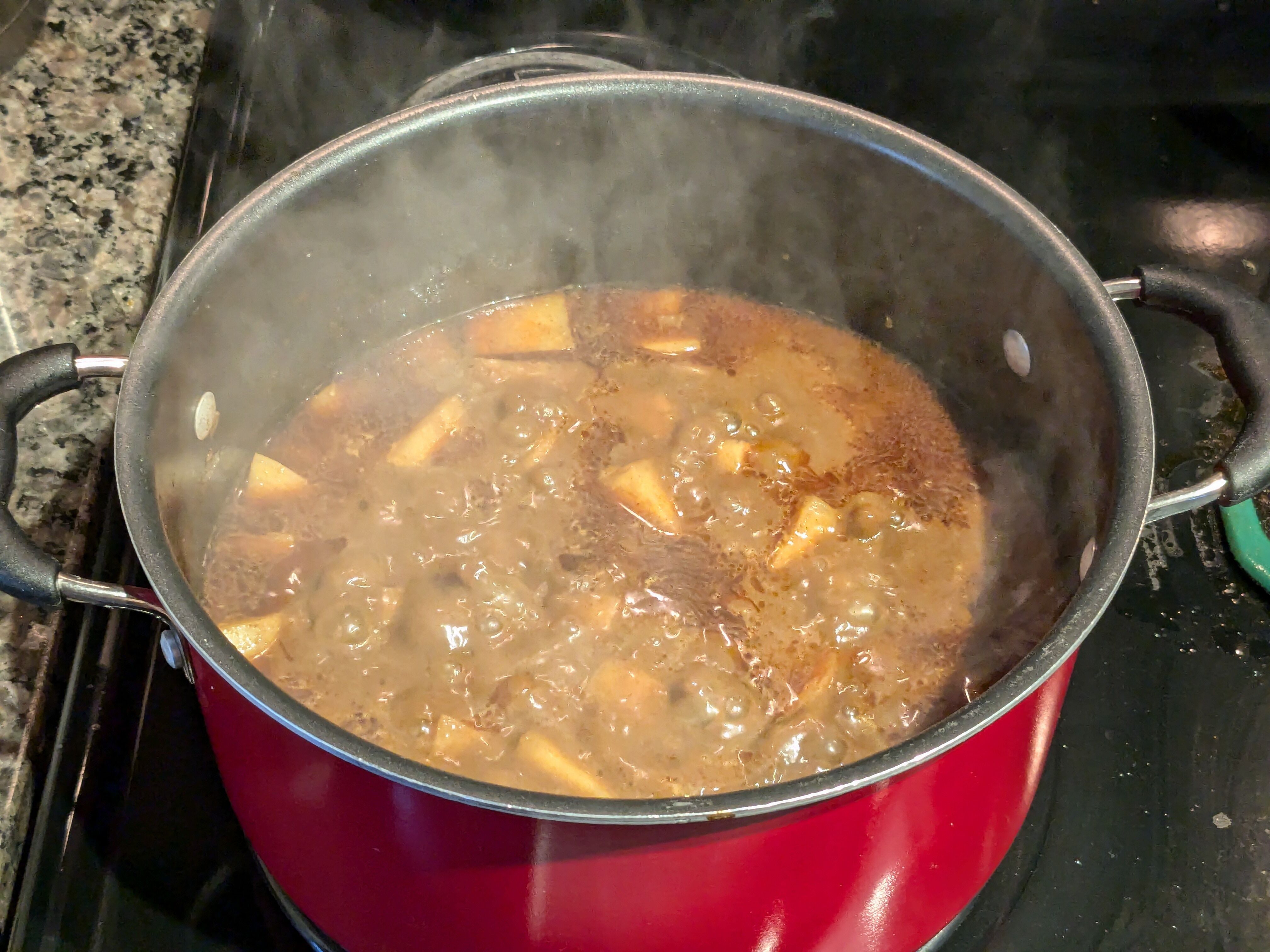
For the dinnich, we added about 10 cubed white potatoes and topped it off with enough water to cover. This too reduces down over the next hour until the potatoes are tender and the sauce has thickened slightly.
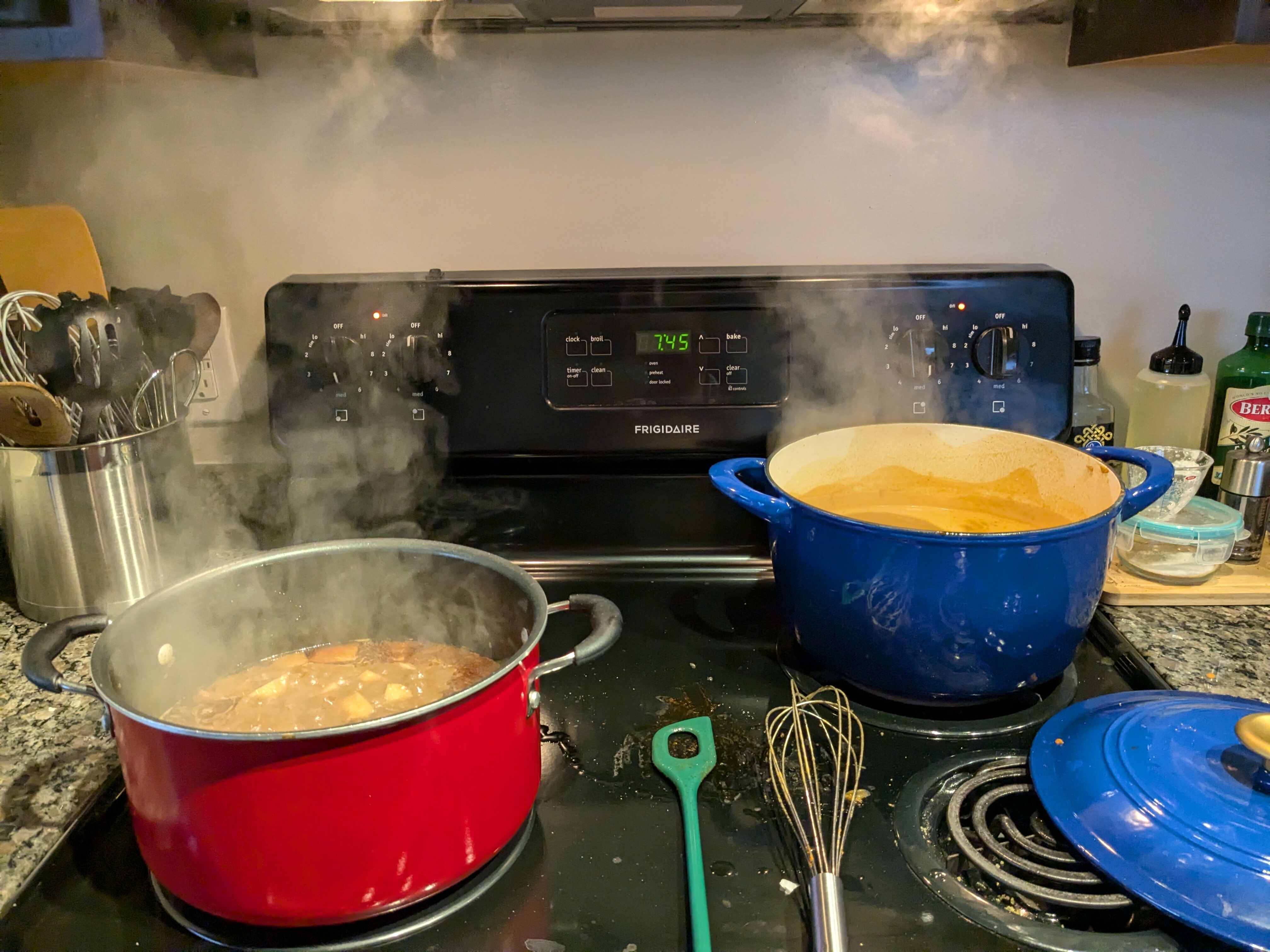
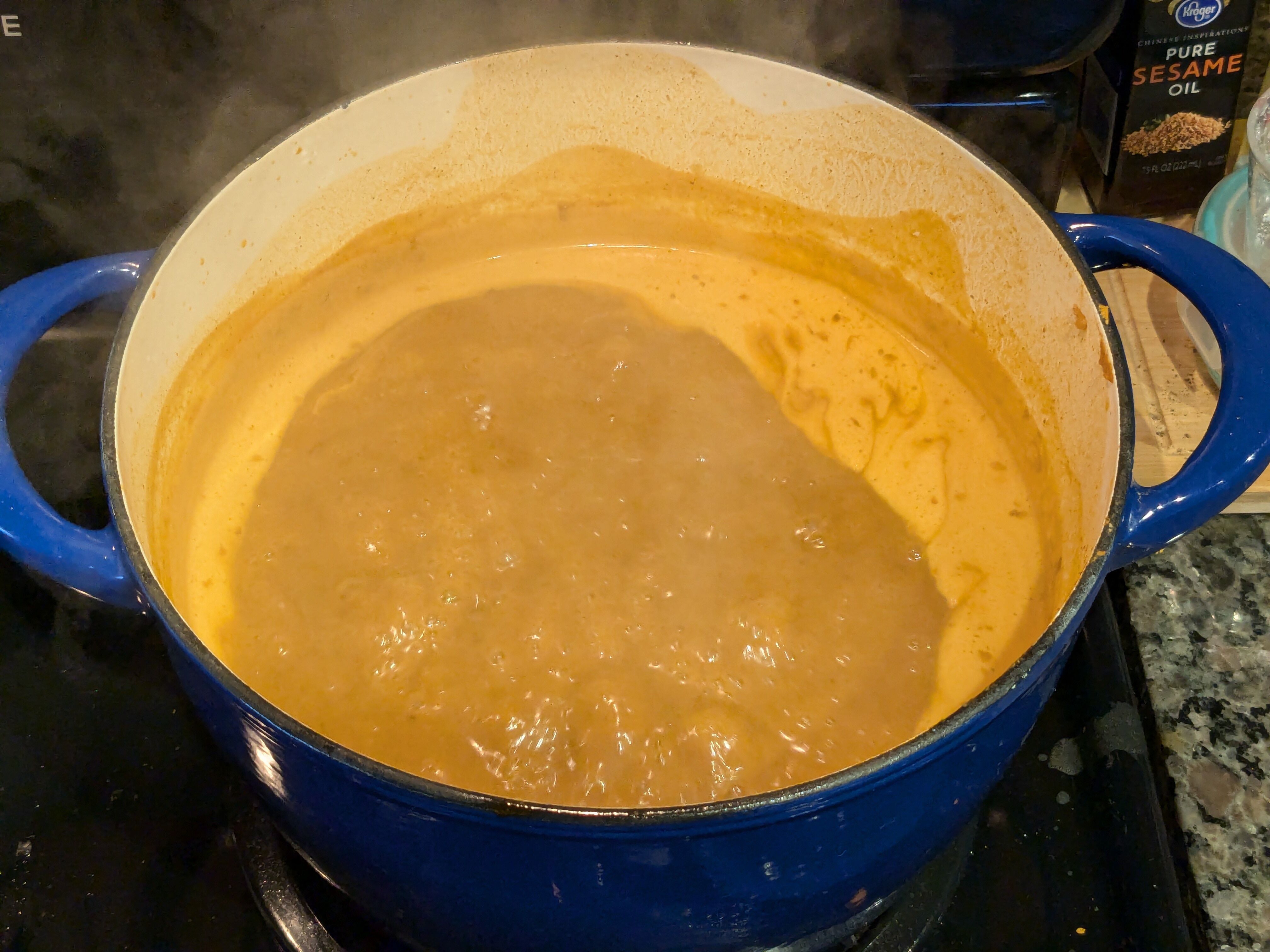
At this point, the name of the game is evaporation as the shiro and the dinnich reduce down to a less watery consistency. As the shiro cooks, it thickens considerably. Lena warns that it should be done over a bare simmer and to take care when stirring (I used a whisk) as the thick, bubbly shiro can burn you if it splatters.
Lena finishes the shiro by optionally stirring through a halved green chili for heat, which we did.
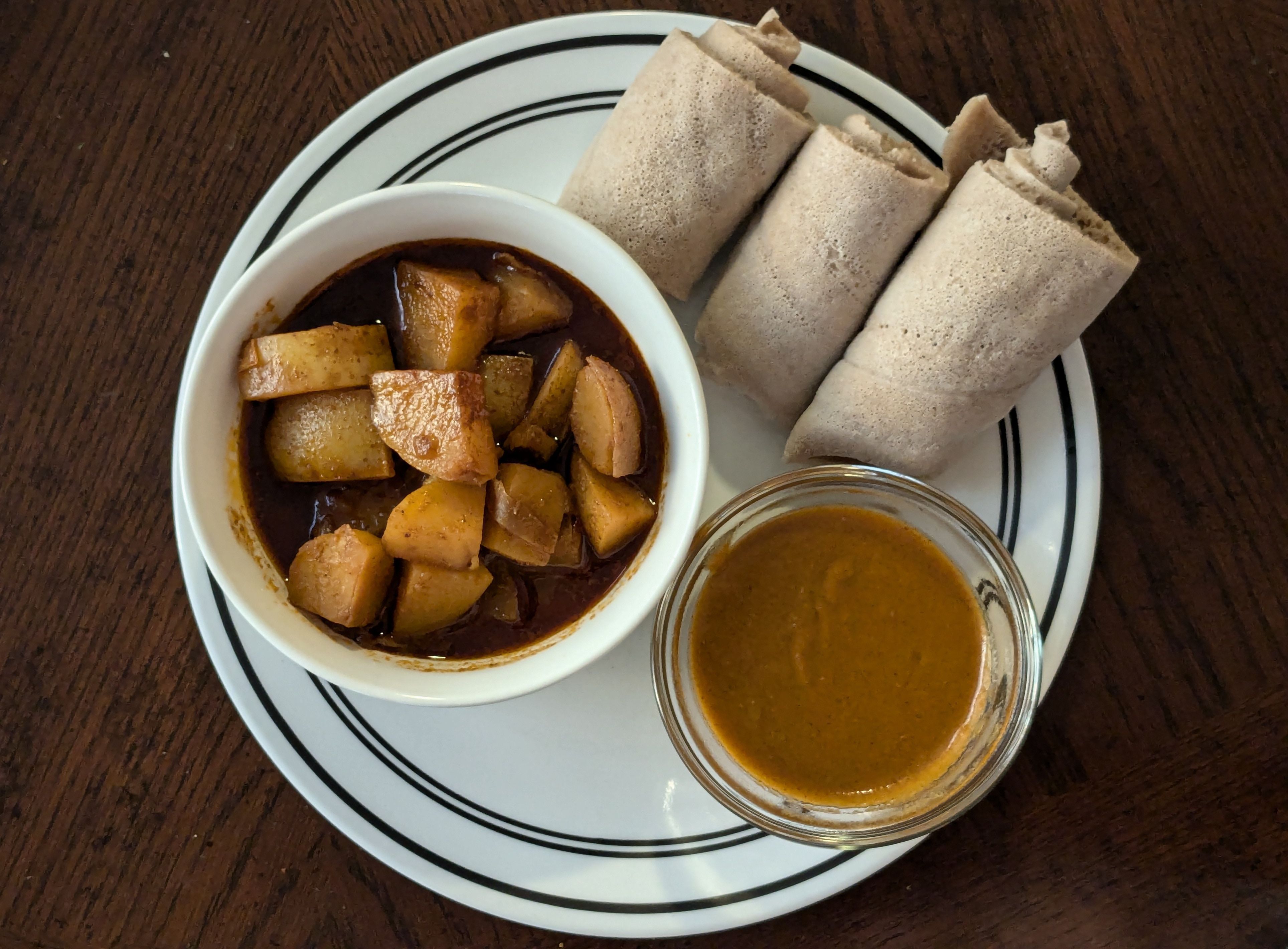
We ate the shiro and dinnich with injera flatbread and over rice spiced with turmeric. The shiro was thick and very satisfying to eat with rice, in my opinion. It is smooth and has almost a nutty flavor and is plenty spicy. The dinnich is obviously quite similar in flavor to the doro, and was quite pleasant. Both of these were extremely filling.
The shiro was quite good, though I'd like to try the nech shiro without the berbere spice. I like spicy food, but especially since we ate it along with the dinnich, I think it would have been a nice balance.
All in all, this was a nice book-end for our exploration of Ethiopian cuisine.
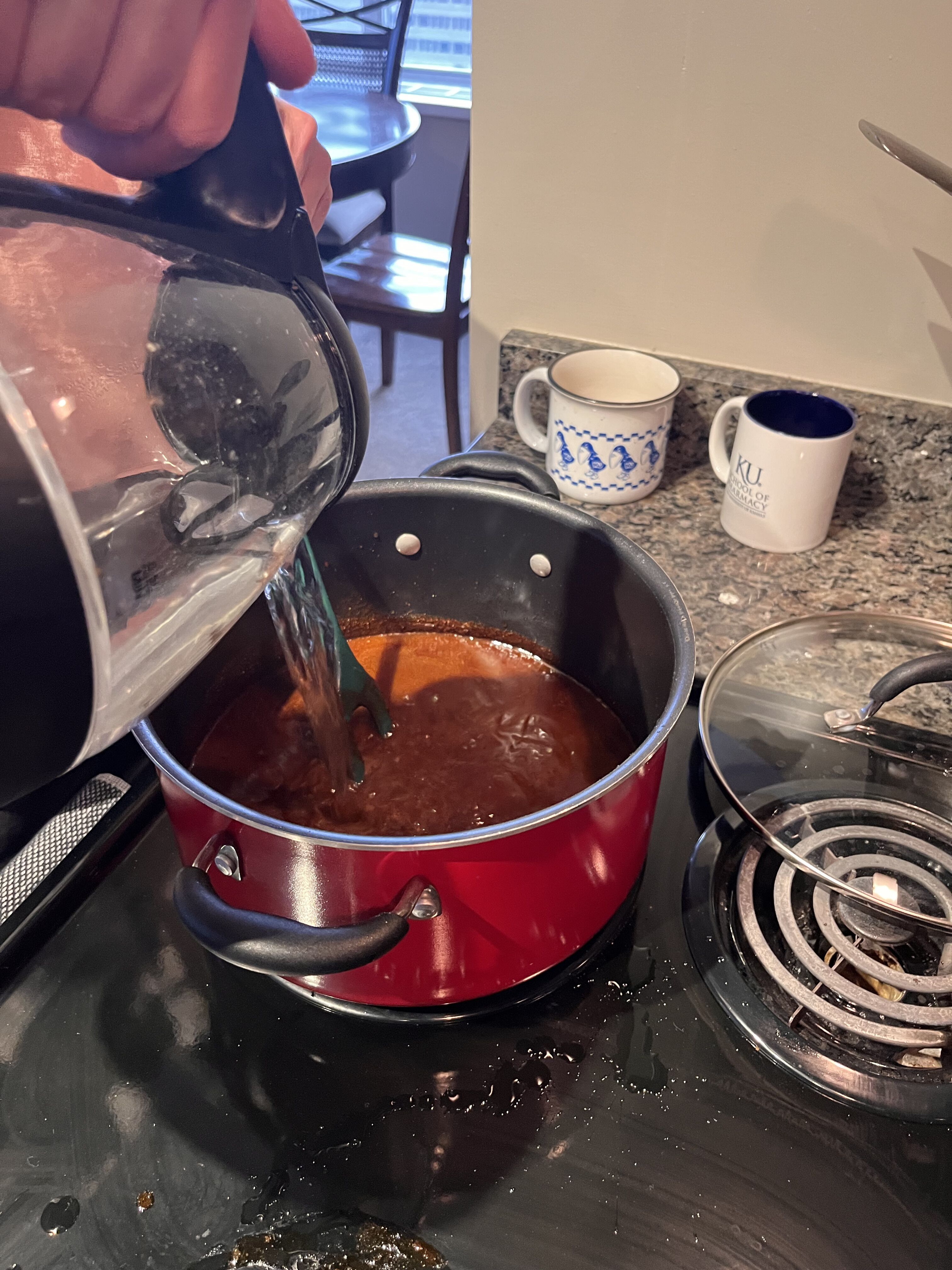
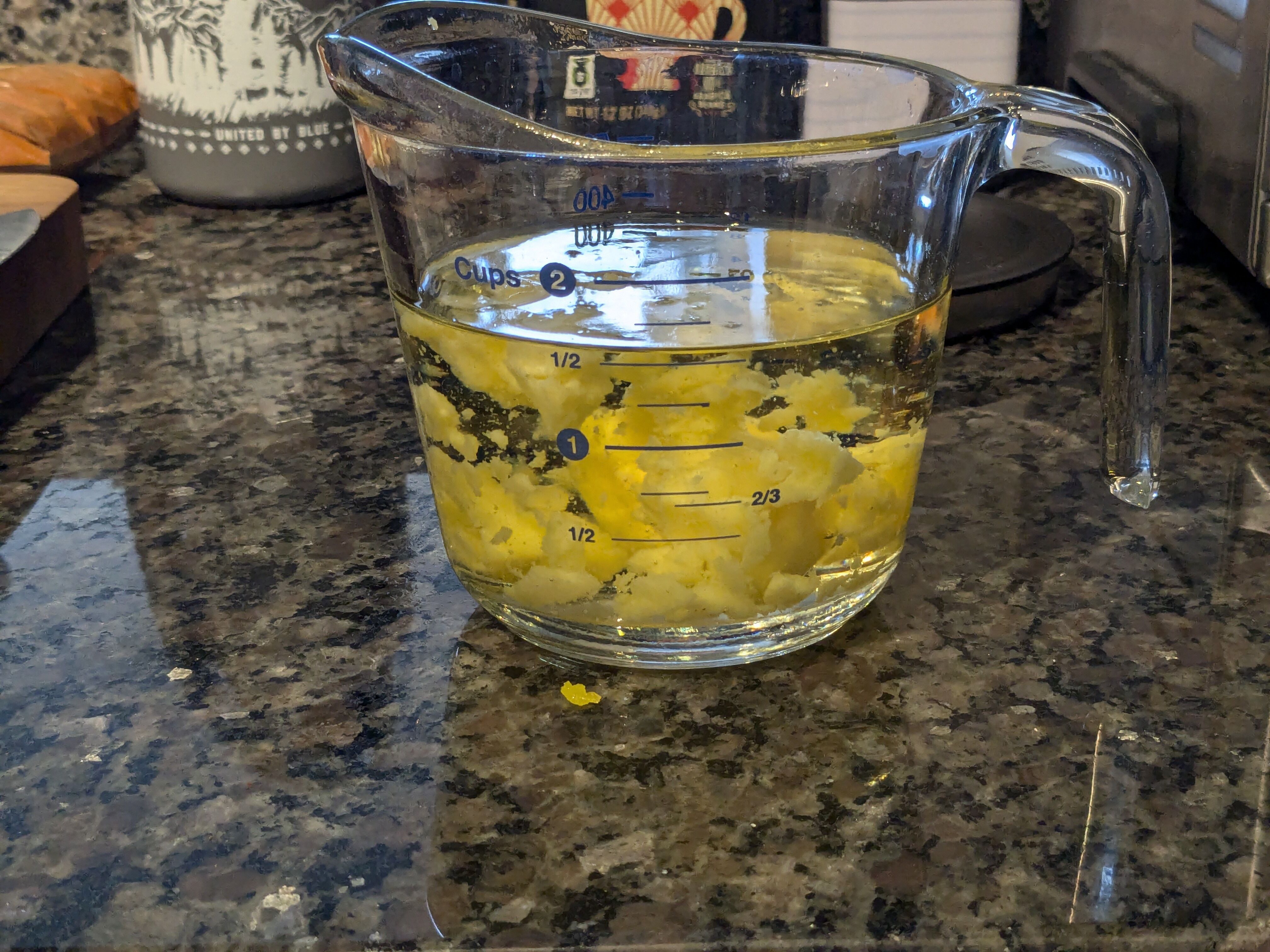
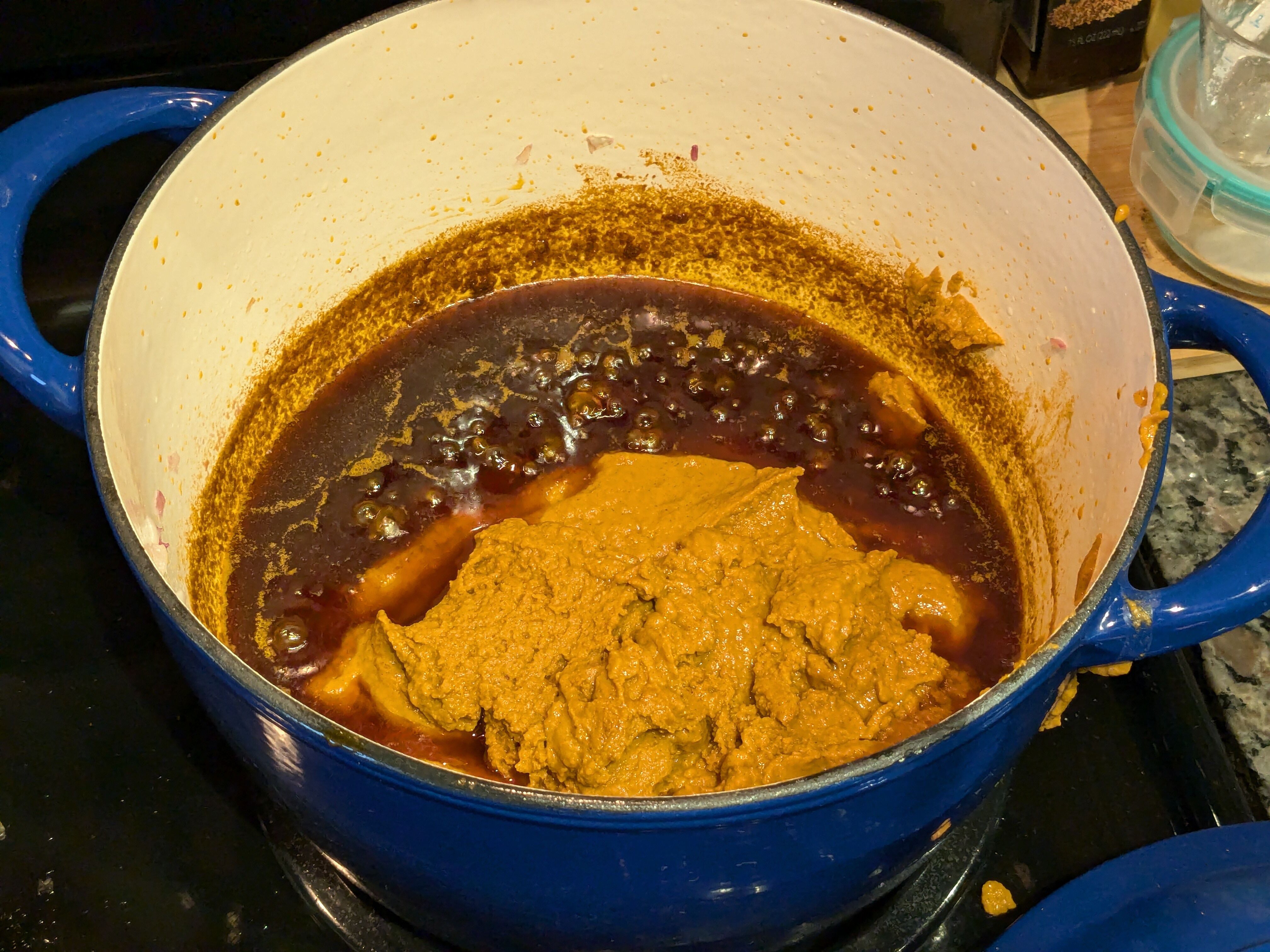
All images in this post were taken by me or my sister, Piper. I borrowed "Cooking With Imaye: Ethiopian Cuisine Straight From Mom's Kitchen" from the fantastic Indianapolis Public Library.